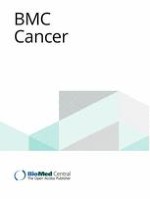“The human cannabinoid G protein coupled receptor 1 (CB1) is highly expressed in central nervous system. CB1-selective antagonists show therapeutic promise in a wide range of disorders, such as obesity-related metabolic disorders, dyslipidemia, drug abuse and type 2 diabetes. Rimonabant (SR141716A), MJ08 and MJ15 are selective CB1 antagonists with selectivity >1000 folds over CB2 despite of 42% sequence identity between CB1 and CB2. The integration of homology modeling, automated molecular docking and molecular dynamics simulation were used to investigate the binding modes of these selective inverse agonists/antagonists with CB1 and CB2 and their selectivity. Our analyses showed that the hydrophobic interactions between ligands and hydrophobic pockets of CB1 account for the main binding affinity. In addition, instead of interacting with ligands directly as previously reported, the Lys1923.28in CB1 was engaged in indirect interactions with ligands to keep inactive-state CB1 stable by forming the salt bridge with Asp1762.63 . Lastly, our analyses indicated that the selectivity of these antagonists came from the difference in geometry shapes of binding pockets of CB1 and CB2. The present study could guide future experimental works on these receptors and has the guiding significance for the design of functionally selective drugs targeting CB1 or CB2 receptors.” https://www.ncbi.nlm.nih.gov/pubmed/29797785 https://onlinelibrary.wiley.com/doi/abs/10.1111/cbdd.13337]]>
Tag Archives: CB(1) and CB(2) receptors
Endocannabinoid system and pathophysiology of adipogenesis: current management of obesity.
 “The endocannabinoids are now known as novel and important regulators of energy metabolism and homeostasis.
The endocrine functions of white adipose are chiefly involved in the control of whole-body metabolism, insulin sensitivity and food intake. Adipocytes produce hormones, such as leptin and adiponectin, that can improve insulin resistance or peptides, such as TNF-α, that elicit insulin resistance. Adipocytes express specific receptors, such as peroxisome proliferator-activated receptor (PPAR)-γ, which serve as adipocyte targets for insulin sensitizers such as thiazolidinediones.
Recently, endocannabinoids and related compounds were identified in human fat cells.
The endocannabinoid system consists primarily of two receptors, cannabinoid (CB)1 and CB2, their endogenous ligands termed endocannabinoids and the enzymes responsible for ligand biosynthesis and degradation.
The endocannabinoids 2-arachidonylglycerol and anandamide or N-arachidonoylethanolamine increase food intake and promote weight gain in animals. Rimonabant, a selective CB1 blocker, reduces food intake and body weight in animals and humans.”
“The endocannabinoids are now known as novel and important regulators of energy metabolism and homeostasis.
The endocrine functions of white adipose are chiefly involved in the control of whole-body metabolism, insulin sensitivity and food intake. Adipocytes produce hormones, such as leptin and adiponectin, that can improve insulin resistance or peptides, such as TNF-α, that elicit insulin resistance. Adipocytes express specific receptors, such as peroxisome proliferator-activated receptor (PPAR)-γ, which serve as adipocyte targets for insulin sensitizers such as thiazolidinediones.
Recently, endocannabinoids and related compounds were identified in human fat cells.
The endocannabinoid system consists primarily of two receptors, cannabinoid (CB)1 and CB2, their endogenous ligands termed endocannabinoids and the enzymes responsible for ligand biosynthesis and degradation.
The endocannabinoids 2-arachidonylglycerol and anandamide or N-arachidonoylethanolamine increase food intake and promote weight gain in animals. Rimonabant, a selective CB1 blocker, reduces food intake and body weight in animals and humans.”
Involvement of the CB2 cannabinoid receptor in cell growth inhibition and G0/G1 cell cycle arrest via the cannabinoid agonist WIN 55,212-2 in renal cell carcinoma.
 “The anti-tumor properties of cannabinoids have been investigated in many in vitro and in vivo studies. Many of these anti-tumor effects are mediated via cannabinoid receptor types 1 and 2 (CB1 and CB2), comprising the endocannabinoid system (ECS).
In this study, we investigated the ECS based on CB 1 and CB 2 receptor gene and protein expression in renal cell carcinoma (RCC) cell lines. In view of their further use for potential treatments, we thus investigated the roles of CB1 and CB2 receptors in the anti-proliferative action and signal transduction triggered by synthetic cannabinoid agonists [such as JWH-133 and WIN 55,212-2 (WIN-55)] in RCC cell lines.
“The anti-tumor properties of cannabinoids have been investigated in many in vitro and in vivo studies. Many of these anti-tumor effects are mediated via cannabinoid receptor types 1 and 2 (CB1 and CB2), comprising the endocannabinoid system (ECS).
In this study, we investigated the ECS based on CB 1 and CB 2 receptor gene and protein expression in renal cell carcinoma (RCC) cell lines. In view of their further use for potential treatments, we thus investigated the roles of CB1 and CB2 receptors in the anti-proliferative action and signal transduction triggered by synthetic cannabinoid agonists [such as JWH-133 and WIN 55,212-2 (WIN-55)] in RCC cell lines.

 “The pharmacological importance of cannabidiol (CBD) has been in study for several years.
CBD is the major nonpsychoactive constituent of plant
“The pharmacological importance of cannabidiol (CBD) has been in study for several years.
CBD is the major nonpsychoactive constituent of plant 
 “In this mini-review, we summarize recent discoveries and present new hypotheses on the role of
“In this mini-review, we summarize recent discoveries and present new hypotheses on the role of